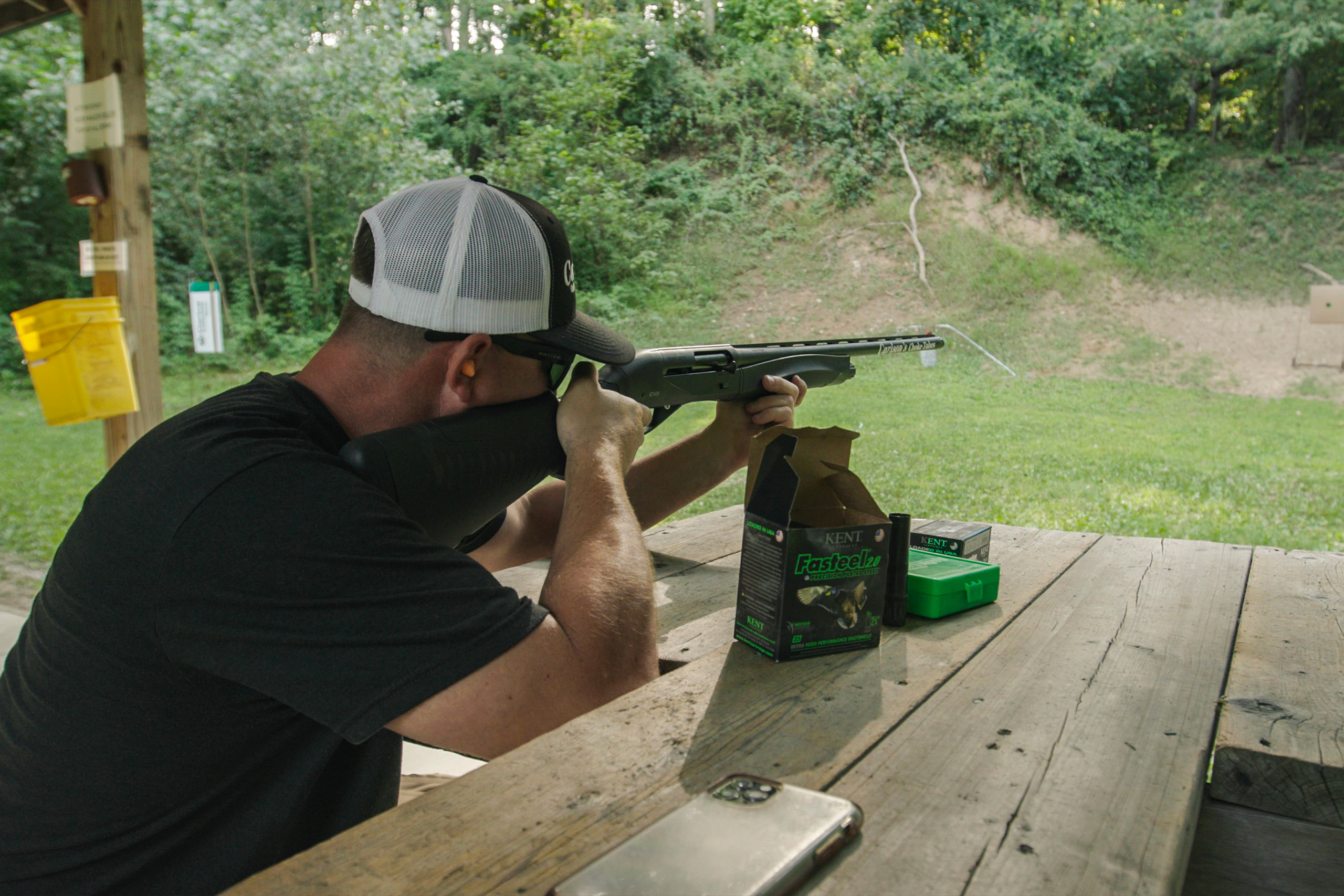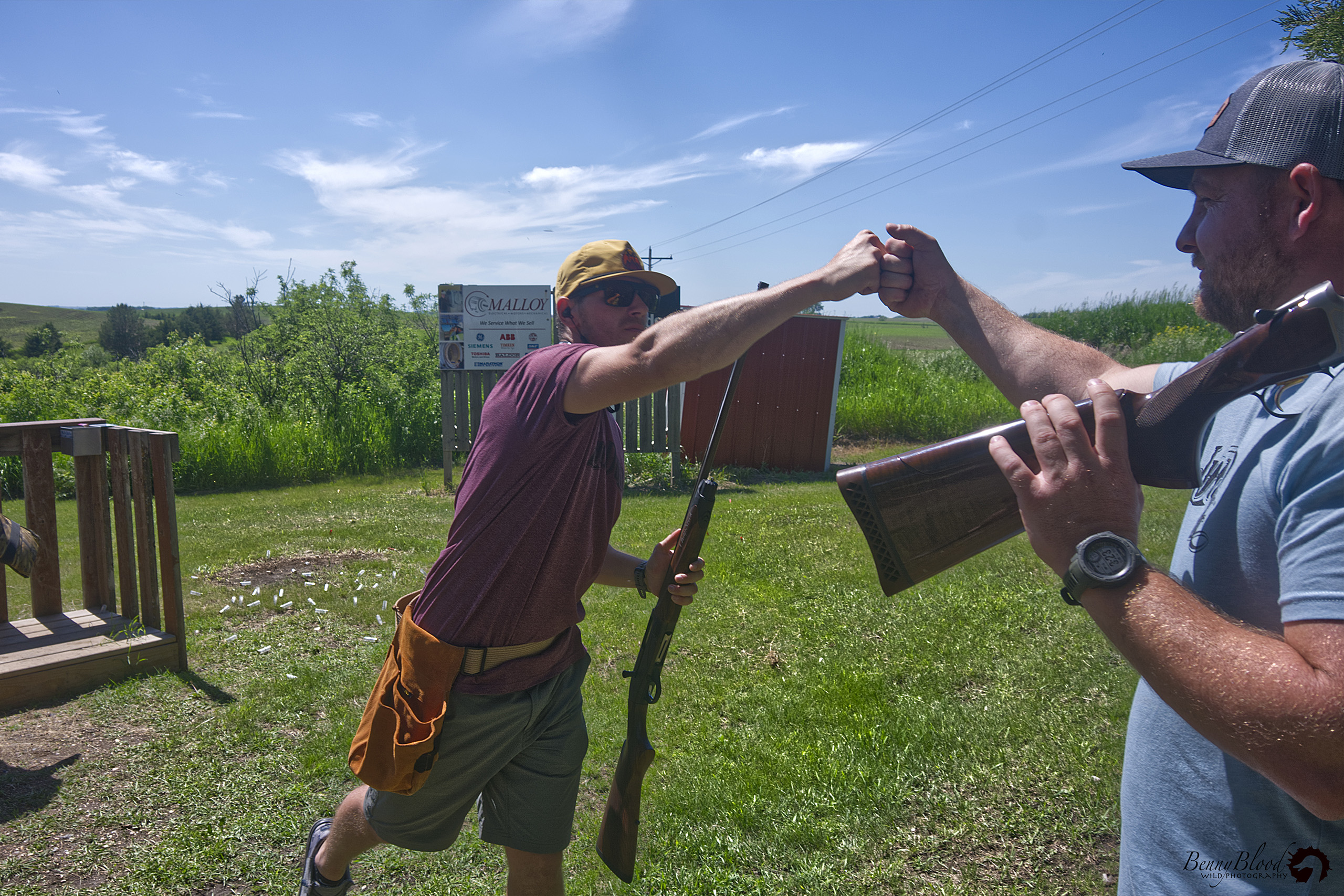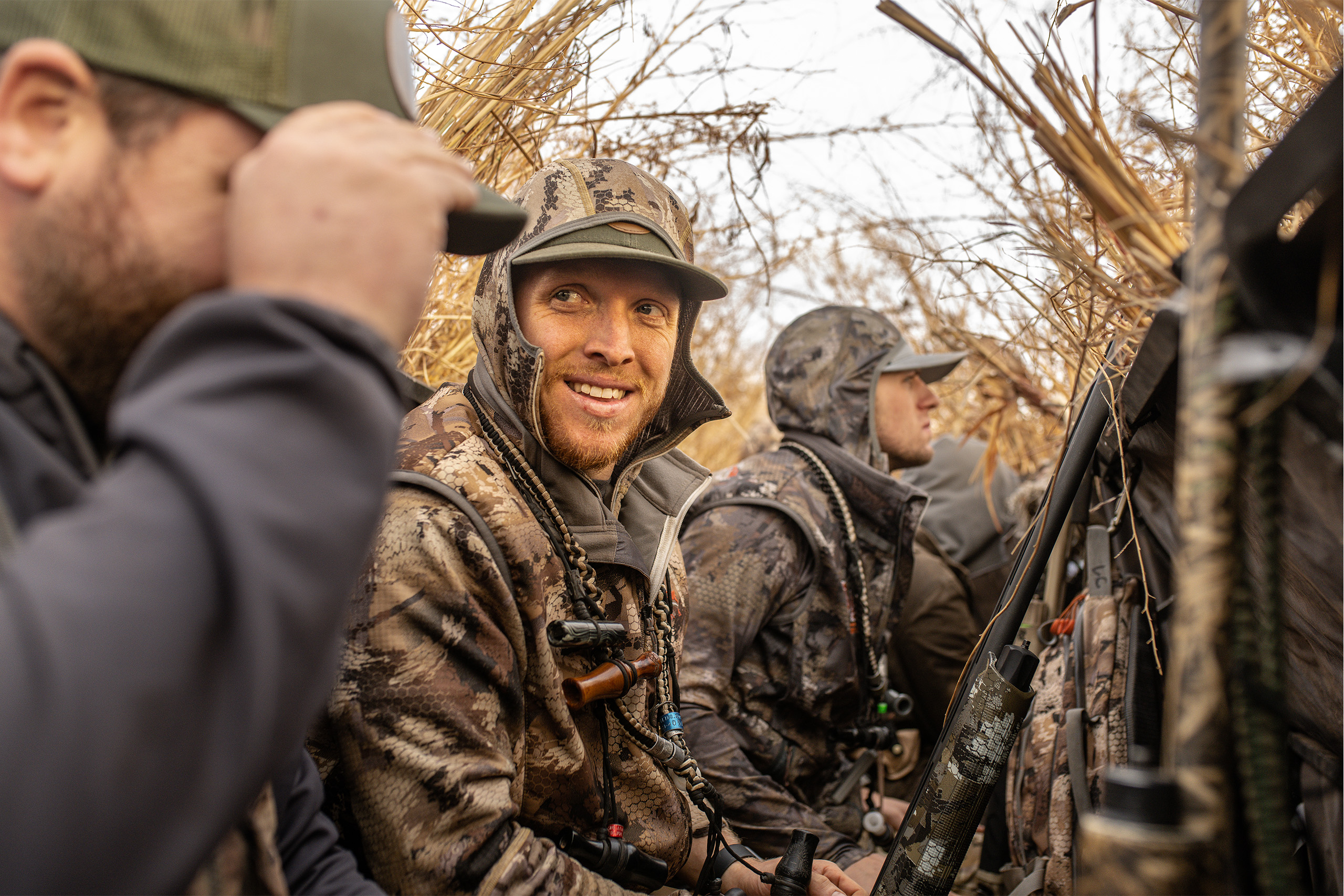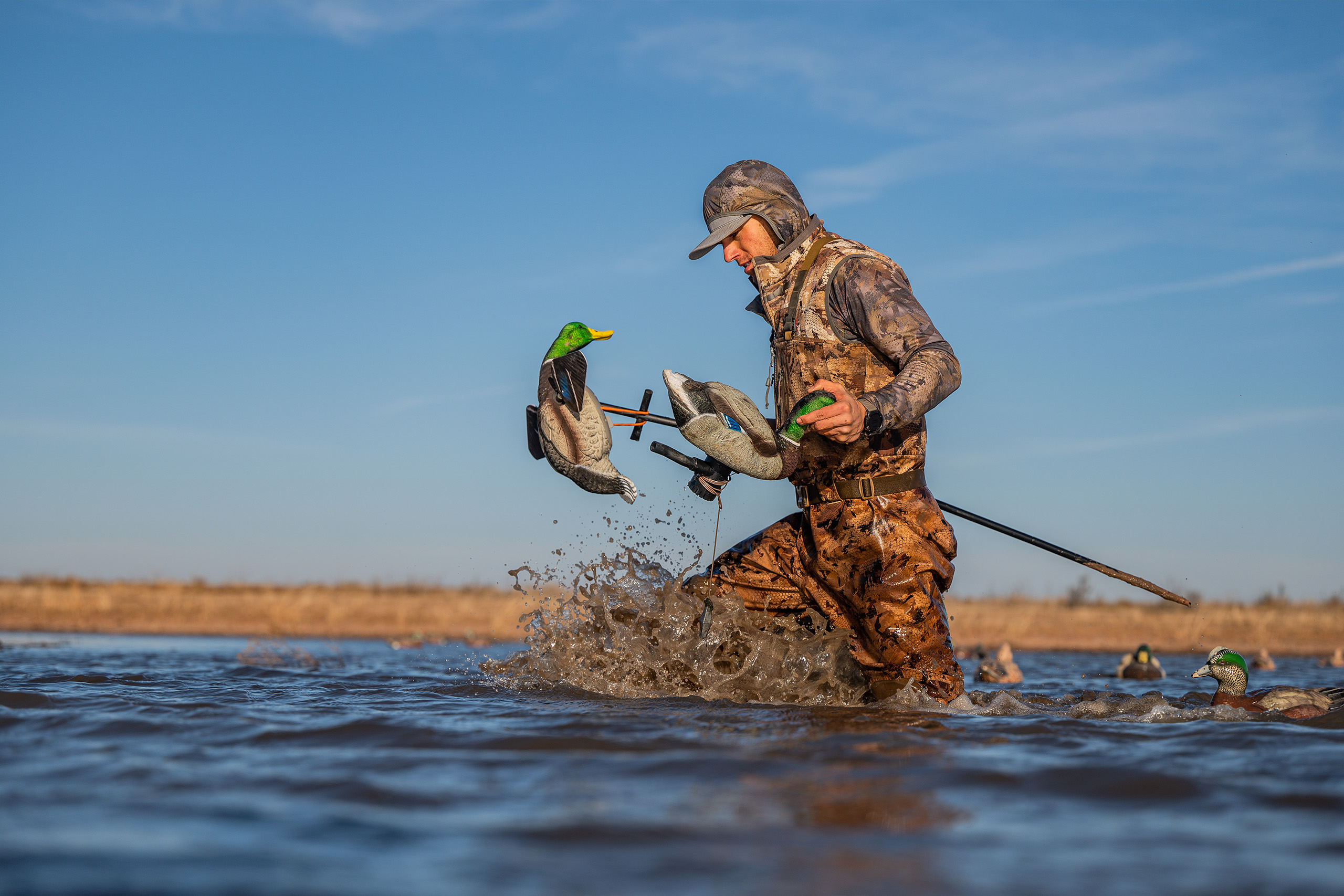Shooting Tips for Bagging a Duck This Thanksgiving
Posted by Lucky Duck Team on Nov 20th 2024
Introduction
Thanksgiving marks the perfect time for waterfowl hunting, with many hunters taking to the blinds to bring home a memorable meal. Bagging a duck isn’t just about luck; it requires preparation, skill, and a few proven techniques to increase your chances of success. This Thanksgiving, whether you’re a seasoned hunter or a newcomer, these practical tips will help you make the most of your time in the field.
Gear Up with the Right Shotgun and Ammo
The right shotgun and ammo are obviously fundamental to a successful duck hunt. When choosing a shotgun, focus on one that fits comfortably and allows smooth, natural movement—qualities that directly impact your accuracy. A 12-gauge shotgun is a popular choice for duck hunting, offering a good balance of power and versatility, though 20-gauge models are also effective for hunters seeking a lighter option with less recoil.
Once you have your shotgun, selecting the right ammo is equally important. Non-toxic loads, such as steel or tungsten, are required by law for waterfowl hunting in most areas and provide a safe, effective option. Steel shot in size #2 is a common choice for large ducks at moderate ranges (up to 40 yards) and #4 is a good choice for small ducks up to 40 yards. Tungsten loads, though pricier, maintain better knockdown power at extended distances. Ultimately, choosing the right combo of shotgun and ammo will set you up for cleaner, more consistent shots, helping to minimize wounded birds and ensure a productive hunt.
Pattern Your Shotgun for Optimal Accuracy
Once you’ve chosen your shotgun and ammo, the next step is to pattern your shotgun. Patterning involves testing various chokes and shot sizes to see how your gun distributes pellets at different ranges. This process reveals the ideal setup for your gun, allowing you to understand how well it will perform in the field.
To pattern your shotgun, set up a target at 30 to 40 yards—a typical range for duck hunting—and fire multiple rounds with different choke and load combinations. Look for a tight, even spread that will reliably cover a duck-sized target at this distance. Adjust chokes as necessary (e.g., using a modified or improved cylinder choke) until you achieve a pattern that maximizes pellet density within a kill zone. Knowing how your gun performs with each load not only boosts your confidence but also increases the likelihood of a clean kill when a duck flies into range.

Brush Up on Target Practice Before the Hunt
Sharpening your shooting skills before the season just makes sense. One of the best ways to practice for duck hunting is to head to a skeet or trap range, where you can work on hitting moving targets similar to those you’ll encounter in the field. Focus on lead timing, smooth swinging, and follow-through to get comfortable with the shot.
Consider taking a lesson with an instructor, or if you’re practicing solo, focus on key fundamentals such as keeping your eyes on the target, mounting the gun smoothly, and following through after each shot. With consistent practice, you’ll build muscle memory, making it easier to react quickly and accurately on a real hunt. Target practice not only hones your aim but also reinforces good technique, allowing you to approach your Thanksgiving hunt with confidence and precision.
Take Your Time – Patience is Key
One of the most common mistakes hunters make is rushing their shots. When ducks are incoming, the excitement can lead to premature shots that miss the target. Instead, slow down and take a few extra moments to line up your shot. Start by focusing on the bird, allowing it to come closer if possible, and take a deep breath to steady yourself before pulling the trigger.
Patience also means waiting for ideal shooting conditions. For example, if ducks are circling or hesitant, give them time to feel comfortable and move in closer. Waiting for the right shot opportunity ensures better accuracy and conserves ammunition.
Focus on a Single Bird, Not the Flock
It can be tempting to shoot into a group of ducks flying overhead, but this approach rarely yields good results. When you focus on the entire flock, you’re likely to miss the individual birds. Instead, pick one bird, track it, and focus your shot on that target. This targeted approach helps you maintain control and increases your chances of a successful hit.
Once you’ve downed your first bird, you can try to recover and adjust to target another if you’re going for a double (and another for a triple). But remember, each shot should be focused on one bird at a time.
Understand Proper Lead for Moving Targets
Learning to gauge the right lead—how far ahead of a bird to aim—is essential for duck hunting. Ducks in flight are fast-moving targets, and your shot needs to arrive at the same spot as the bird at just the right moment. For closer, slower-moving ducks, a slight lead might be enough, but for ducks further out or flying at faster speeds, a greater lead is necessary.
Instead of overthinking the lead, try to trust your instincts by following the duck’s movement and positioning your shotgun naturally ahead of the bird. Practice helps develop this instinct, allowing you to better judge the distance and speed on the fly (pun intended). Remember to keep your swing fluid and follow through after the shot—this continuity will help you hit your target more consistently.

Perfect Your Technique for Head-On Shots
Head-on shots, though they can seem daunting, are actually some of the easiest to execute if approached correctly. As the bird flies directly toward you, position your shotgun slightly below the bird’s flight path, keeping your aim in line with its feet. As you pull the trigger, bring the barrel up to cover the bird—this technique ensures that your shot meets the duck as it flies toward you.
If the duck is descending or coming in for a landing, aim lower, so that by the time the shot reaches the bird, it’s hitting at the right spot. Mastering this technique for head-on shots takes practice but can be one of the most effective ways to connect with ducks as they approach your position. With a little patience and precision, head-on shots can quickly become your secret weapon in the blind.
Make Use of a Quality Non-Toxic Load
A quality non-toxic load is essential for ethical and effective waterfowl hunting. Since the ban on lead shot for waterfowl, steel shot and other non-toxic alternatives have become the go-to choice for hunters. Steel shot is widely available and performs well at moderate ranges, especially with sizes #2 or #3 for ducks. However, for those longer shots, consider upgrading to a load with higher density, like tungsten or bismuth, which retain more energy over distance and have better knockdown power.
While non-toxic alternatives such as tungsten and bismuth are often more expensive, they offer superior lethality at range, helping you avoid unnecessary misses or wounding birds. Choosing the right load depends on your hunting conditions and distance form your target.

Position Yourself Strategically in the Blind
Where you position yourself in the blind can make all the difference when ducks start flying. Your blind placement is part of your overall strategy—consider wind direction, visibility, the position of your decoy spread, and cover when selecting your spot. When there is wind, ducks prefer to land into it, so place yourself downwind to encourage them to approach your decoys head-on, which can set you up for easier, closer shots.
Take advantage of natural cover or camouflage materials to blend in with your surroundings. Avoid excessive movement in the blind, as ducks have excellent vision and can easily spot unnatural movement, especially when coming in close. Also, remember that positioning your decoys thoughtfully can help direct ducks where you want them. By positioning yourself strategically and minimizing movement, you’re more likely to get ducks within range for accurate, ethical shots.

Practice Consistency and Keep Improving
Consistent, accurate shooting is the goal to aim for, and that comes with practice. Duck hunting involves a unique set of skills that are honed over time—knowing how to read a duck’s flight path, handling your shotgun instinctively, and perfecting your lead all require dedicated practice. It will help if you make a habit of hitting the skeet or trap range in the off-season to keep your skills sharp and to refine your muscle memory.
Consider practicing with different shooting scenarios, like crossing or incoming shots, to mimic the types of shots you’ll encounter in the field. If possible, work with an instructor to fine-tune your technique and focus on areas for improvement. The more you practice and maintain consistency, the more confidence you’ll gain, which translates directly into improved accuracy and a more enjoyable hunting experience.
Conclusion
Bagging a duck this Thanksgiving is all about preparation, patience, and a commitment to improving your skills. From choosing quality gear to practicing shot placement, each step plays a role in making your hunt both successful and enjoyable. As you step into the blind, remember that the skill you need to bring down a duck is part of what makes waterfowl hunting so rewarding. Stay patient, and keep practicing—and with a little bit of luck, you’ll bring home a bird to enjoy with family and friends this Thanksgiving.
Boost Your Hunt with Lucky Duck Products
To make the most of your hunt, consider adding Lucky Duck’s top-of-the-line waterfowl hunting gear to your setup. Our selection of motion decoys, like the Lucky HD Floater or the Agitator HDi, creates lifelike movement that attracts even the wariest of ducks. For concealment, Lucky Duck offers durable, portable blinds that provide excellent coverage and help you stay hidden until the perfect shot. Each product is designed with waterfowl hunters in mind, enhancing both your experience and your success. Make this Thanksgiving hunt your best yet with Lucky Duck Decoys working to make you successful. Happy hunting!

